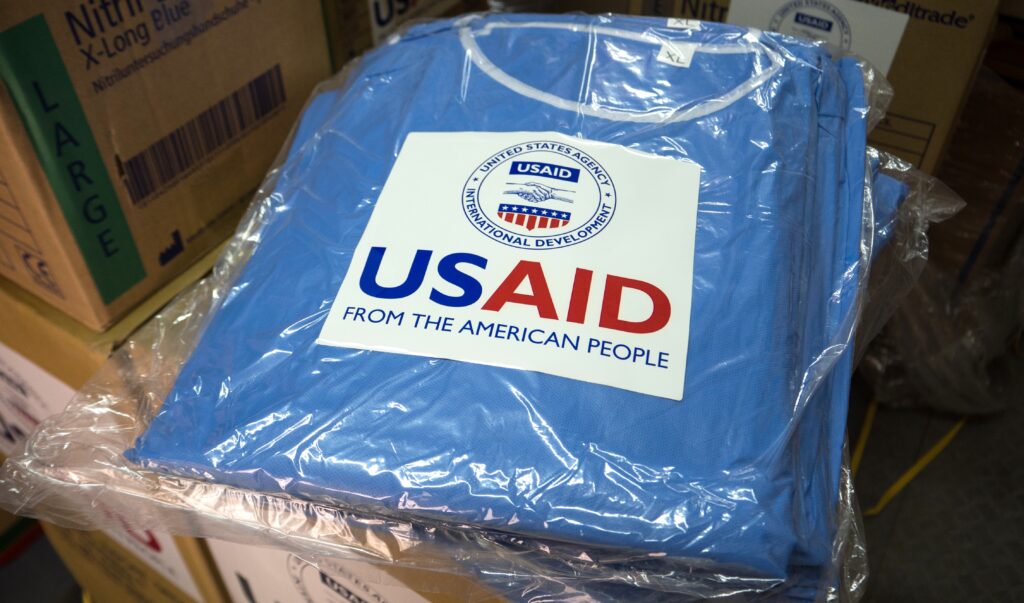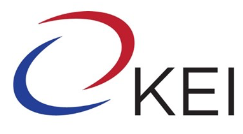The Peninsula
The Consequences of Foreign Assistance Cuts for U.S.-South Korea Cooperation

For decades, U.S. foreign assistance has played a pivotal role in advancing U.S. interests, strengthening alliances, and promoting stability in key regions of the world. Nowhere has this been more evident than in Asia, where U.S. development cooperation with South Korea—itself a model for the benefits of U.S. foreign assistance—has been a vital tool for reinforcing shared values, strengthening civil society, enhancing economic resilience, underwriting regional stability and security, and providing a compelling alternative to China’s increasingly assertive regional ambitions.
But the Donald Trump administration’s destruction of USAID and gutting of U.S. foreign assistance threatens to undermine this strategic advantage. The wanton discarding of joint U.S.-South Korea development initiatives gives China new opportunities to expand its influence. These reductions have not only undercut development outcomes for vulnerable populations but have also damaged the broader diplomatic and security framework that sustains U.S. alliances in the Indo-Pacific.
The Diplomatic Value of Foreign Assistance
Foreign assistance is more than just humanitarian aid; it has been a powerful tool of U.S. diplomacy, reinforcing alliances and promoting shared values through targeted investments in infrastructure, governance, and capacity building. Through USAID’s work in East and Southeast Asia over the past sixty-plus years, the United States—often working in partnership with South Korea—has helped foster conditions for sustainable growth while reinforcing norms of transparency, accountability, and respect for the rule of law.
The United States’ approach to foreign assistance is distinct from China’s state-directed development model. While China’s Belt and Road Initiative (BRI) typically prioritizes the country’s short-term strategic and economic gains over the long-term sustainability of development partners, U.S.-backed development partnerships have sought to empower local communities, strengthen democratic governance, and promote economic self-reliance.
Indeed, South Korea itself serves as a shining example of the benefits of U.S. foreign assistance. When USAID was founded in 1961, South Korea was an impoverished country with an economy still in shambles following the Korean War. Through strategic, targeted assistance that helped support and empower the Korean people, South Korea today stands as a global economic, technological, military, and cultural leader.
South Korea is also a powerful counterpoint for those who misconstrue or mischaracterize foreign assistance as charity. The United States’ early assistance to the Korean Peninsula helped to support a capable diplomatic, security, and economic ally—a partner in driving regional prosperity, security, and stability—demonstrating both the “return on investment” on foreign assistance and the strategic benefit for U.S. national security. South Korea was, after all, the United States’ sixth largest trading partner in 2024, importing almost USD 91.3 billion worth of American imports that directly translated to American jobs and prosperity.
By scaling back these investments, the Trump administration has now diminished a critical tool for advancing U.S. interests and values.
U.S.-South Korea Cooperation on Development Aid
The U.S.-South Korea development partnership has been an essential component of U.S. engagement in Asia. For years, USAID and the Korea International Cooperation Agency (KOICA) have collaborated to promote inclusive economic growth, strengthen public health systems, and improve environmental resilience across Southeast Asia.
One notable example is the Mekong-U.S.-Korea partnership, which brought together American and Korean resources to address transboundary challenges in the Mekong River Basin—from water security to environmental conservation. This initiative directly supported regional stability by fostering sustainable development in Vietnam, Cambodia, and Laos, helping to create markets for U.S. energy companies, a stable alternate center of gravity in Southeast Asia, and standards and behavior congruent with U.S. and Korean interests.
The Trump administration’s deep cuts to USAID funding jeopardize these efforts and force development programs to scale back at precisely the moment when Beijing is accelerating its own investments in the region. As a result, countries that might otherwise have had an alternative to China’s high-interest loans and infrastructure deals are now left to their own devices—or China’s.
U.S. funding restrictions have similarly crippled the Science, Technology, and Innovation (STI) Partnership, a joint initiative designed to build technical capacity in developing economies. These programs had successfully positioned South Korea—itself a model of development success—as a critical partner in sharing expertise with emerging economies. The resulting gap may now allow China to expand its influence in areas such as digital infrastructure, e-commerce, and telecommunications.
USAID-KOICA cooperation has also served as a critical enabler of closer trilateral development cooperation between the United States, South Korea, and Japan, providing developing nations with viable alternatives to China’s development model while reinforcing regional stability and diplomatic ties. The development pillar of the trilateral relationship is also the most natural, uncontroversial, and affirmative on-ramp for greater cooperation between the three countries in other areas. By building much-needed bureaucratic and inter-agency muscle memory and confidence, Washington, Seoul, and Tokyo can enhance and expand ties, including on security and defense matters, at a time when Beijing is increasingly destabilizing and hostile to regional and global stability.
One important initiative, the Infrastructure Transaction and Assistance Network (ITAN), was designed to mobilize private-sector investment for sustainable infrastructure projects across the Indo-Pacific. By leveraging U.S. financing tools alongside Korean and Japanese expertise, ITAN aimed to counterbalance China’s often predatory infrastructure practices under the BRI.
In the Philippines, the recently established Open Radio Network (ORAN) Academy, which aimed to benefit stakeholders invested in digital access and build a telecommunications workforce and safe, secure, and reliable digital ecosystems across Asia, is now on the chopping block. U.S., Korean, and Japanese telecommunications companies (including NTT DOCOMO, Qualcomm, and SK Telecom, among others) would have benefitted from the ORAN initiative. Now, with no or few alternatives for our partners in the region, it is more likely that we will see Huawei assume an even more dominant position in the region’s digital architecture—with commensurate economic and security costs.
By scaling back its financial commitments to these initiatives, the Trump administration has weakened promising alternatives to build Indo-Pacific economic mechanisms and institutions that can drive prosperity in the United States every bit as much as they benefit the nations of the region. These missed opportunities are more than just development setbacks; they represent a broader failure to strengthen U.S. alliances and offer regional partners a compelling alternative to Beijing’s influence.
Ceding Space to China
Sensing a vacuum, Beijing has been quick to expand its presence in key strategic corridors, with the risk—indeed near certainty—that it will also seek to use its economic leverage to gain political influence.
Countries such as Cambodia, Laos, and Myanmar—once key recipients of U.S.-led development cooperation—have grown increasingly dependent on Chinese investment, giving China greater sway over regional resources, supply chains, and decision-making. China’s sense of the moment can be seen in how quickly it stepped into the breach in Cambodia to offer demining assistance after the United States suspended its mine-clearing assistance in January.
In the Pacific Islands, where the U.S.-South Korea development partnership once promoted transparent governance and sustainable development, the vacuum now created by the withdrawal of U.S. support—leaving Korea in an unenviable and unsustainable position—is ceding space to unchecked Chinese investment that may well allow the country to consolidate influence over strategic maritime routes, with consequences for both regional stability and U.S. strategic interests.
Equally troubling is the damage these cuts have inflicted on U.S. alliances. In both Seoul and Tokyo, the abrupt reduction in U.S. development assistance has raised concerns about the country’s long-term commitment to the Indo-Pacific. While South Korea seems committed to continue expanding its own development cooperation efforts, the absence of a fully engaged United States has undermined confidence in broader bilateral coordination, where the strength of the development partnership has not only advanced economic growth but has also reinforced a U.S.-led regional order and U.S. strategic partnerships. The Trump administration has reduced the United States’ ability to shape regional outcomes in line with the goals of the U.S.-ROK alliance.
Conclusion
To regain lost ground, the United States must reinvest in its development partnerships with South Korea. Renewing financial commitments to initiatives like the Mekong-U.S.-Korea partnership, before it is too late, will be critical to re-establishing the U.S. role as an enduring presence in Asia and as a leader in sustainable development.
Moreover, Washington should work closely with Seoul and Tokyo to expand technical assistance programs in areas such as digital connectivity, clean energy, and climate resilience—fields where the three countries’ expertise can provide a clear alternative to Beijing’s influence.
Restoring these partnerships is not just a matter of development—it is a strategic imperative. By working together to offer transparent, sustainable alternatives, the United States and South Korea can promote regional stability and secure regional architecture across the Indo-Pacific consistent with both nations’ interests and values.
In an increasingly competitive geopolitical environment, foreign assistance is not charity—it is a critical investment in America and Korea’s strategic future.
Michael Schiffer served as the assistant administrator of USAID’s Asia bureau from 2022 to January 20, 2025. The views expressed here are the author’s alone.
Image courtesy of USAID via Flickr.
KEI is registered under the FARA as an agent of the Korea Institute for International Economic Policy, a public corporation established by the government of the Republic of Korea. Additional information is available at the Department of Justice, Washington, D.C.
